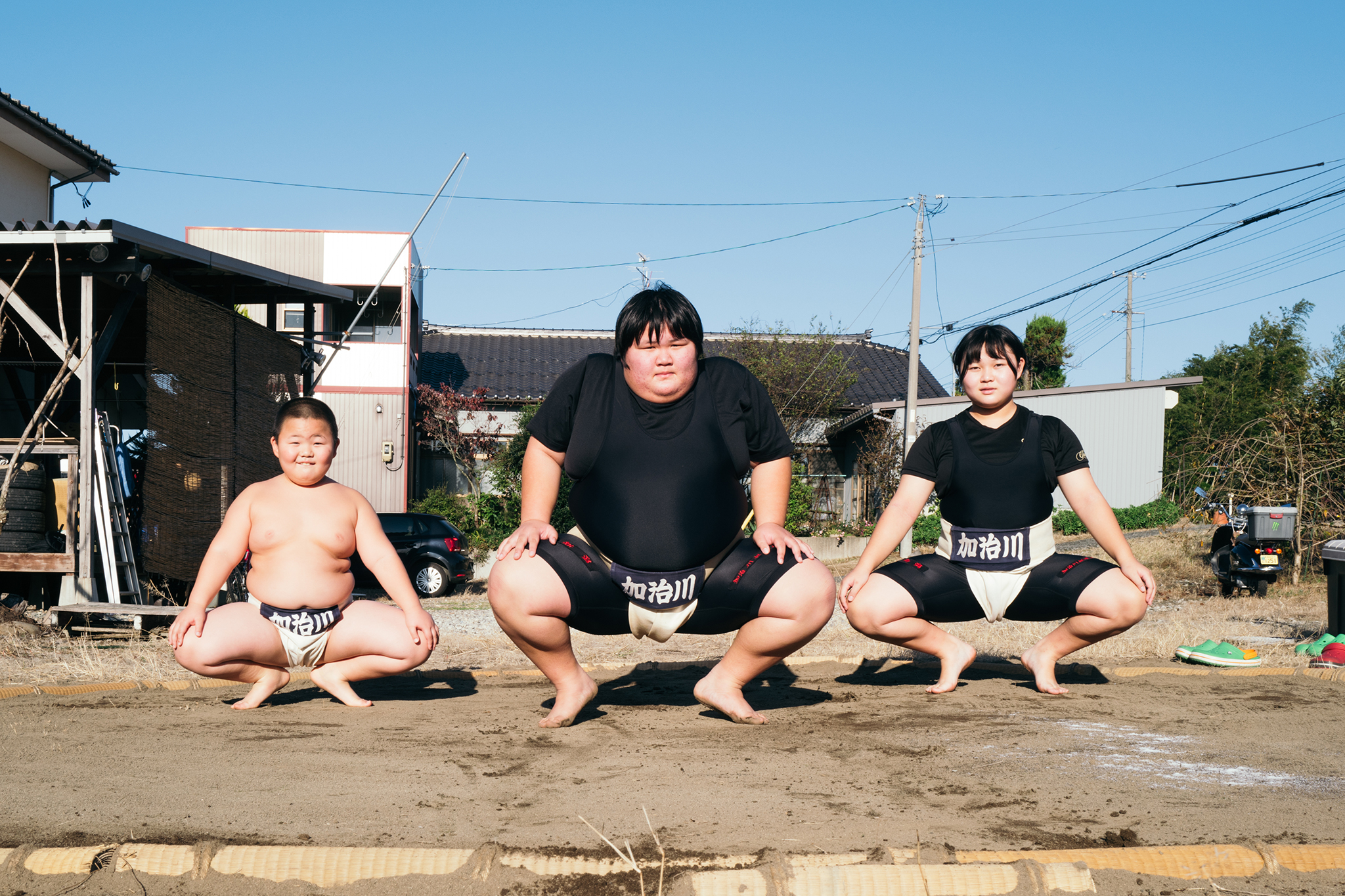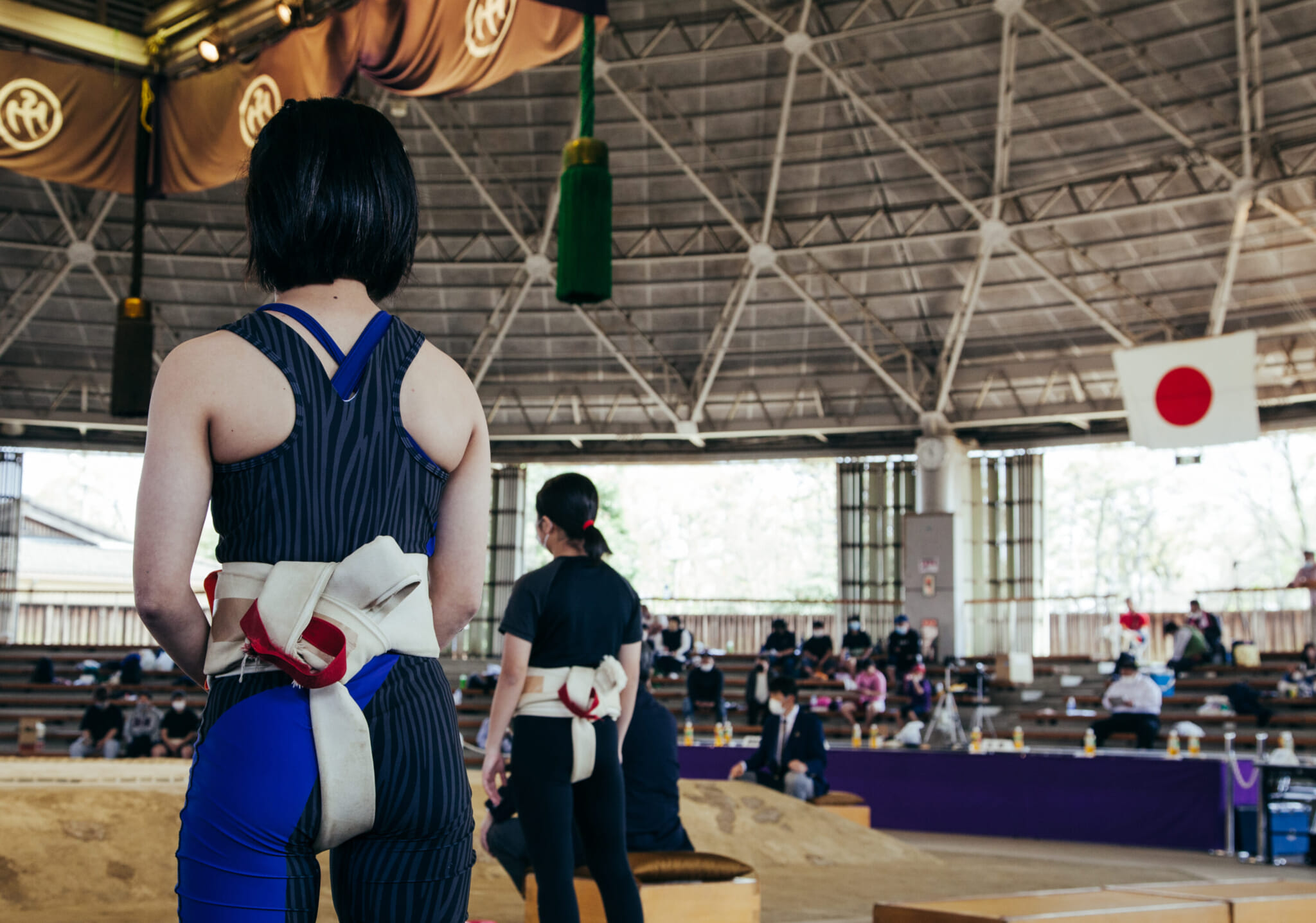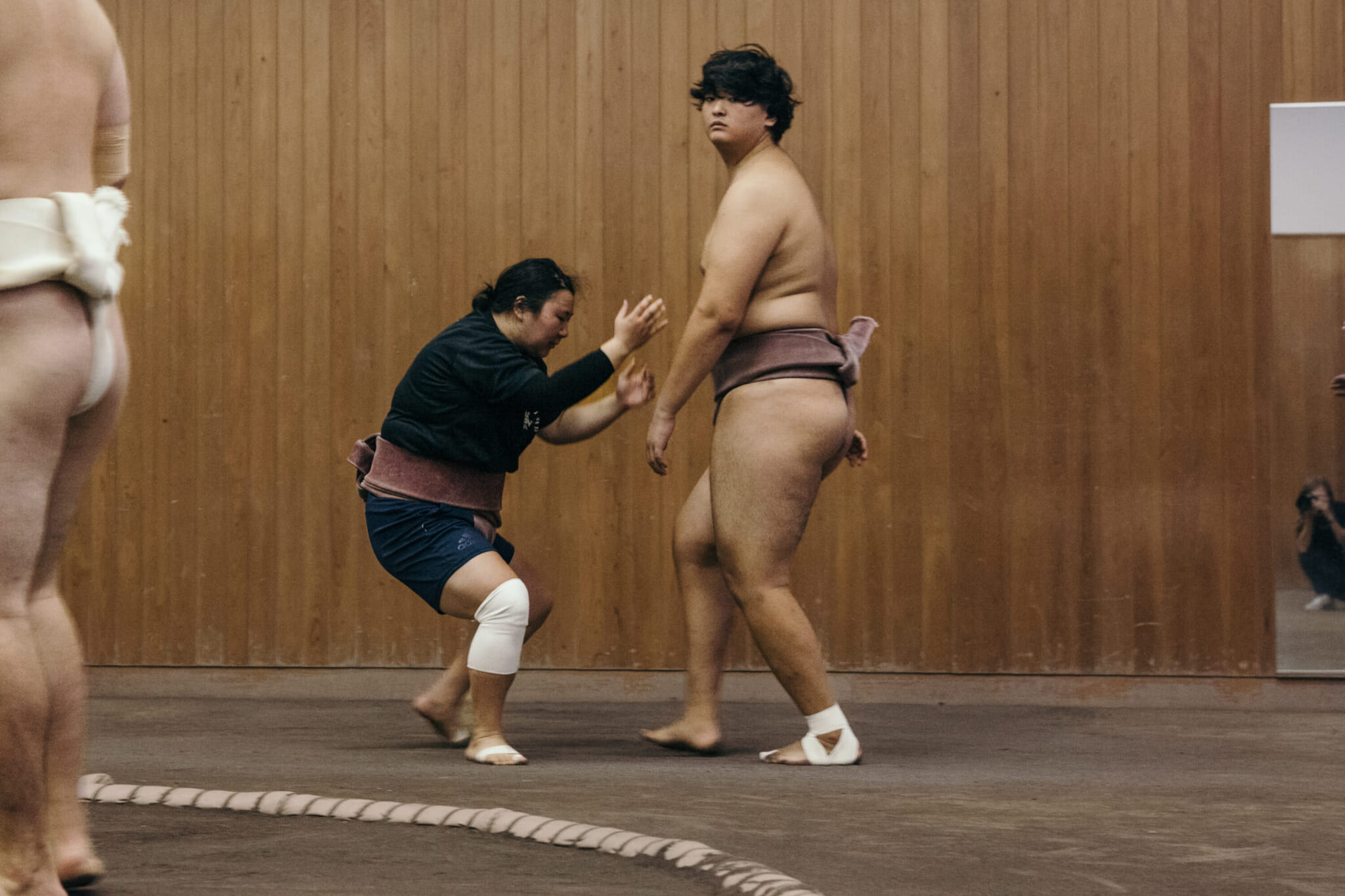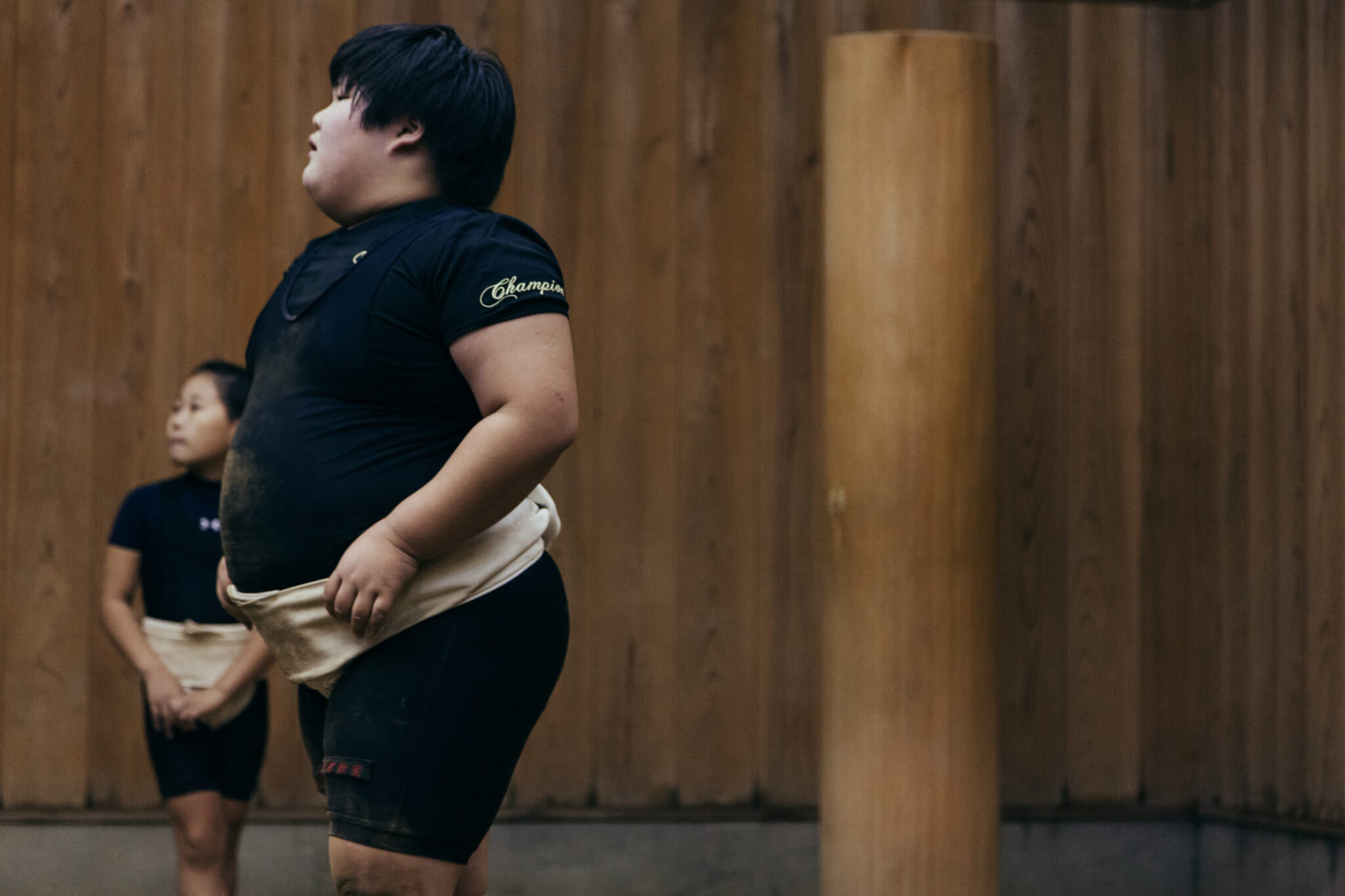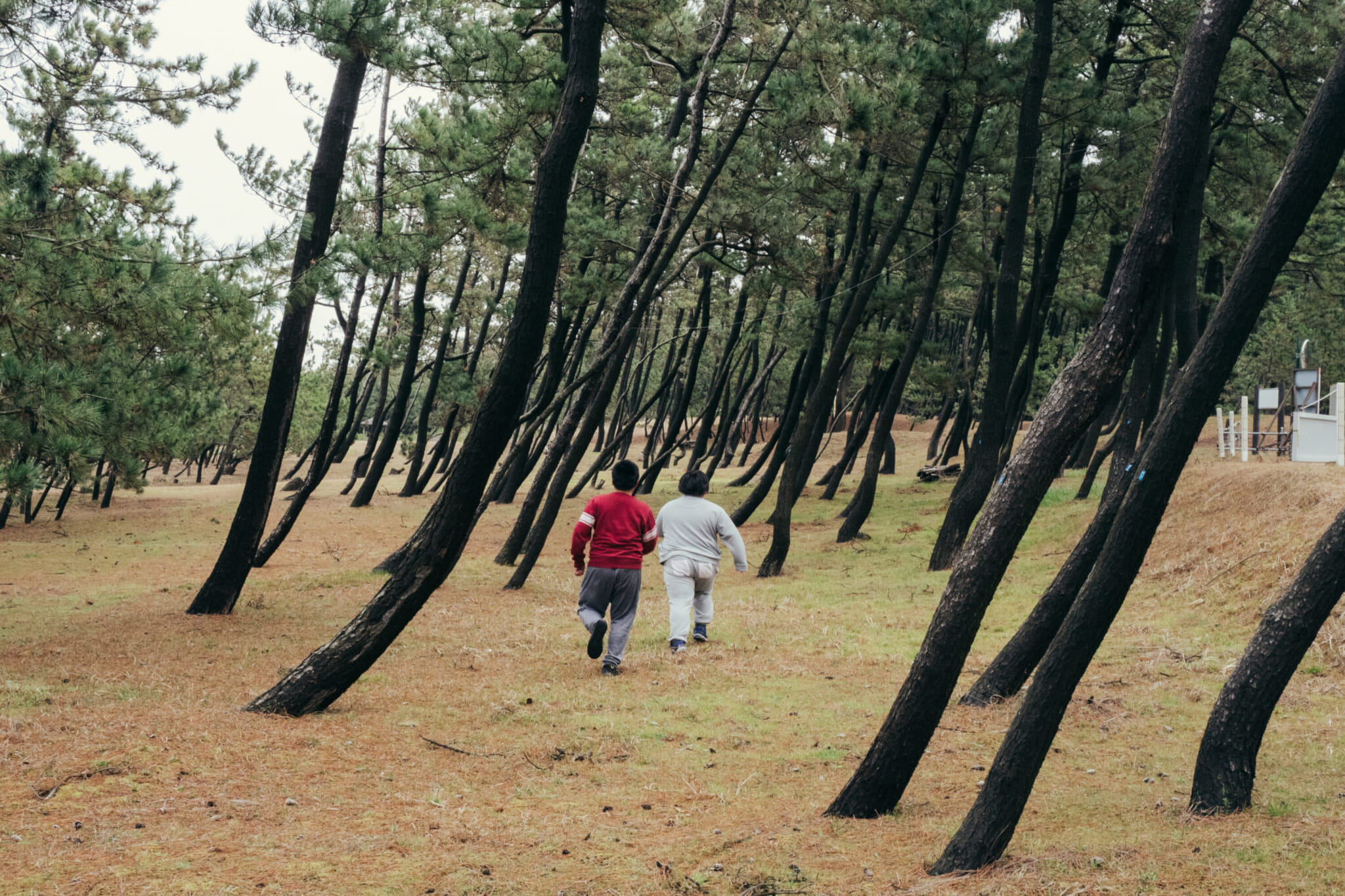I meet photographer Yulia Skogoreva at the very elegant Dotcom Space Tokyo in the backstreets of Harajuku during the pre-Christmas rush to discuss her work documenting Japanese female sumo wrestlers, a project she has been involved with for several years now.
Primarily a photographer of dance, bodies and motion, Skogoreva, who has been a resident of the Japanese capital for more than a decade now, seems just as at ease photographing the enigmatic world of female sumo as she is the modern, nimble and elfish dancers that she’s used to documenting.
During our conversation, the softly spoken Moscow native is careful to point out that sumo can be considered, in her eyes, as a kind of dance or performance. It is, after all, a series of bodies in motion. “I’m always amazed at how flexible they are. Some of the female sumo can do the splits and lift their legs so high in the air. I think of sumo as a kind of dance, a performance. It’s fascinating. You could totally make a dance piece inspired by the movement of sumo. It’s actually one of my ideas for the future to work with a choreographer on a performance based on the movement of sumo.”
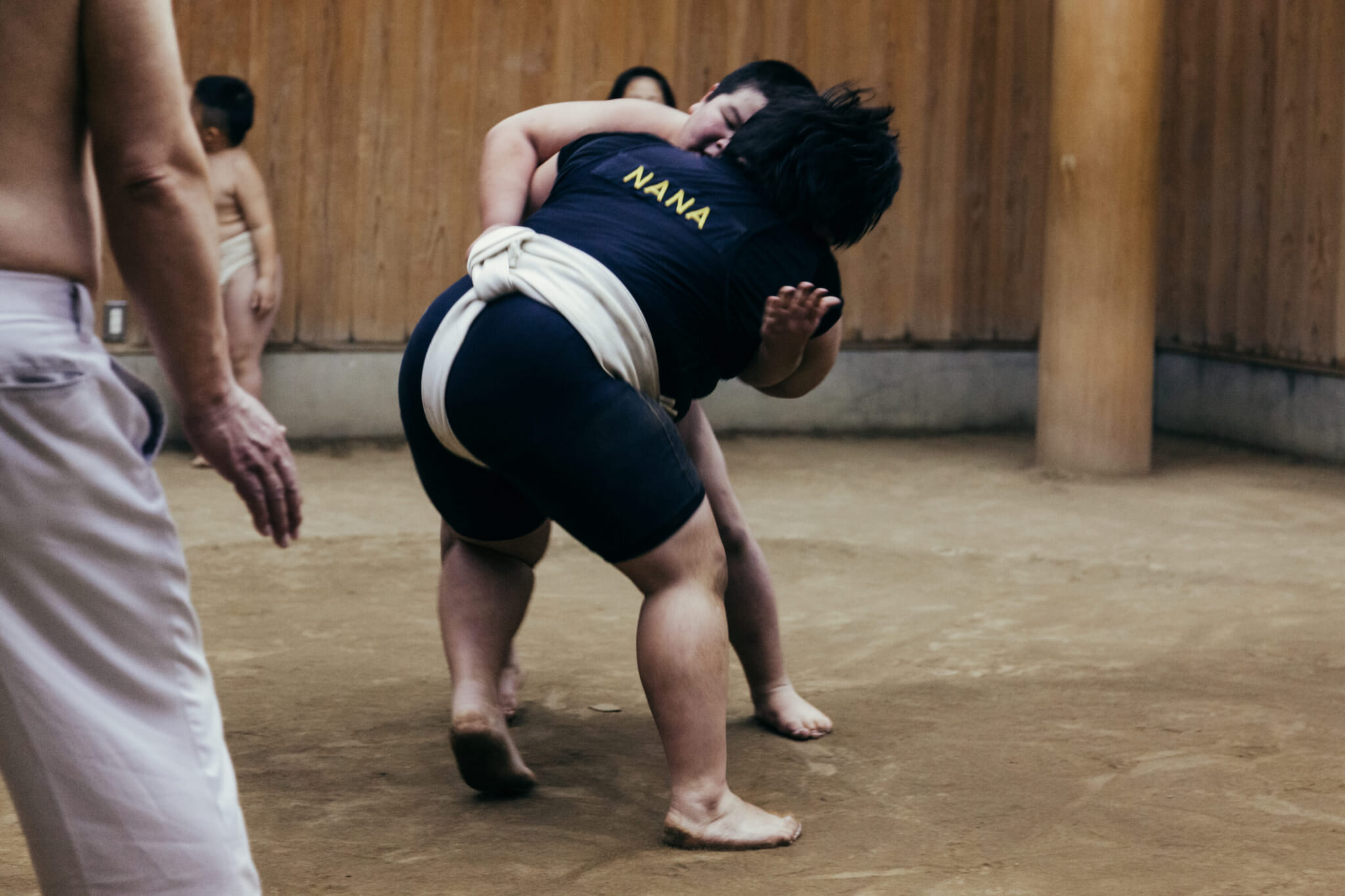
Although known as an arts photographer, Skogoreva also works as a successful editorial and commercial artist photographing campaigns for cult brand Takahiro Miyashita The Soloist and magazines including Vogue Singapore. It’s sumo, however, that we’re discussing on this particular day, and Skogoreva labeling dance and performance as “living architecture” brings to mind the image of these giant sumo as skyscrapers dominating the skyline.
When I ask about the starting point of her journey with sumo, Skogoreva explains that it came about after collaborations with Japanese calligraphers and ceramic artists. “All of their movements and procedures reminded me of dance,” she says. “And then I got curious about sumo.” It was while researching that Skogoreva came across female sumo. “I realized that I had no idea that female sumo existed, like many other people,” she shares. “All of a sudden, it became much deeper in that it wasn’t just body movements.”
Skogoreva learned that discrimination is a major issue in female sumo wrestling. “They can’t compete on a professional level,” she says. “There are several girls in Japan that actually dream of having a professional career. I tried to get in touch with them, which was difficult because not all of them have social media pages, and even if they do, they are difficult to find.”
She approached the sumo association but found them to be unresponsive. Eventually, after roughly a year, Skogoreva received permission to photograph the wrestlers.
In Japan, the traditional martial art of sumo is a man’s dominion. It’s essentially the physical manifestation of patriarchy. Women aren’t allowed in the sacred sumo ring and generally aren’t connected to the sport. This is changing, however, as Skogoreva comments that female sumo is gaining traction as a school and university club activity with both girls and boys training together. “With my photography, I want to raise awareness for girls that need places to practice,” she says. “These girls exist and more people should know about them. Hopefully, something will happen for them.”
It was in the small city of Shibata in Niigata Prefecture, however, that Skogoreva found her prize, her focus after years of battling for access and the right to photograph female sumo wrestlers. At a wanpaku event, a friendly competition for children — in this case, girls and young women — to enjoy sumo in a relaxed environment with the support of local well-wishers and parents, she came across Nana Abe. Nana, then 11 years old, encapsulated everything that was exciting and inspirational about female sumo.
“The sumo federation gave me permission to photograph female wrestlers, and I photographed a competition called wanpaku sumo for school students. It was the first time in Japan where they gathered all the female sumo, so in a way, I captured this historical moment,” says Skogoreva.
“Nana was just one of the wrestlers there,” she continues. “The wanpaku event was full of parents and kids and didn’t feel so serious — but then Nana entered the ring. She had so many fans, and people were holding posters and pictures, and everyone was yelling, ‘Nana-chan.’ And I wondered, ‘Who is this girl?’ I became very curious about her.”
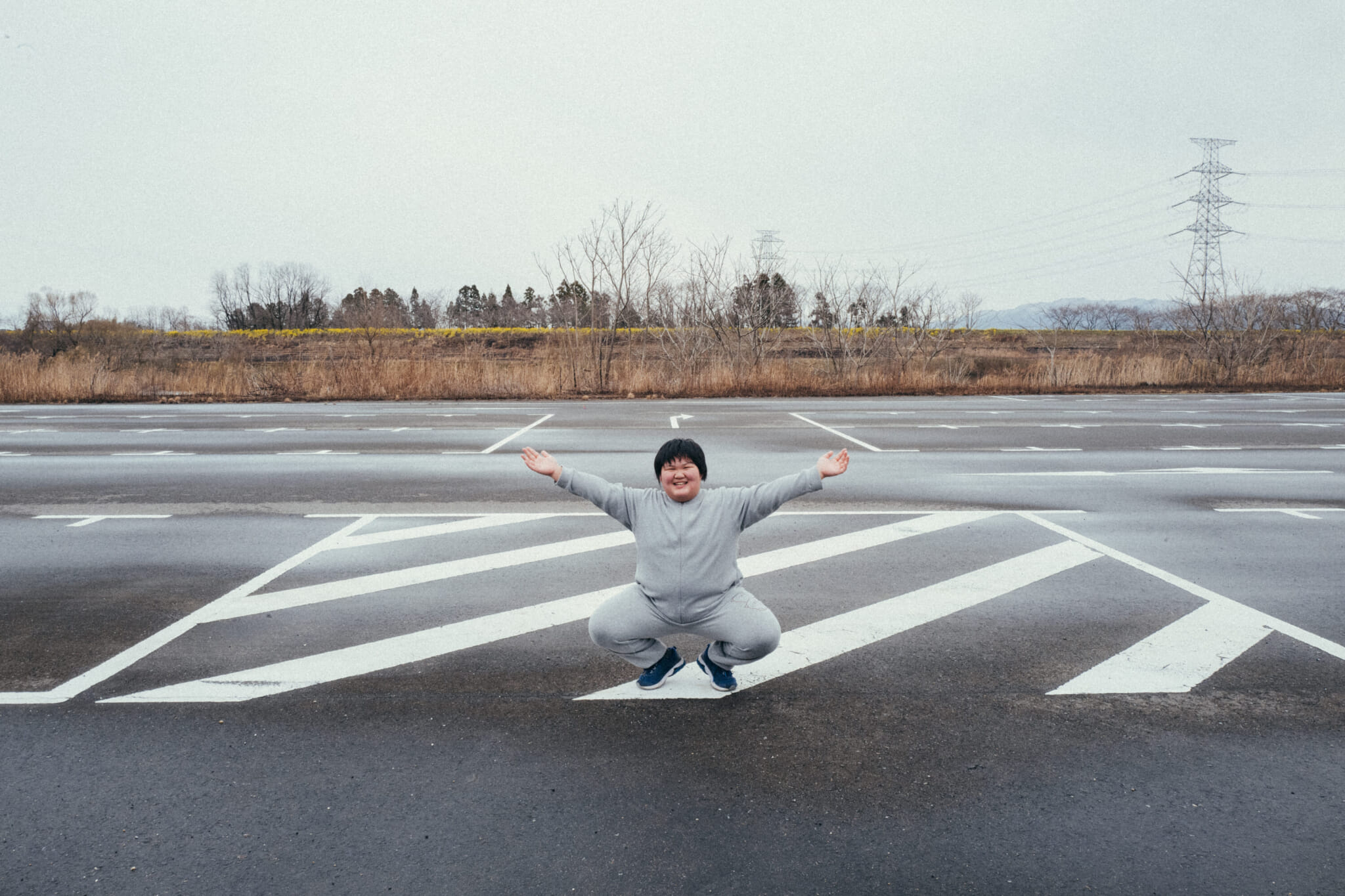
Skogoreva reached out to an organizer at the end of the tournament, requesting to meet Nana and her family. Though it took several months, she was eventually provided with contact information and made a call, connecting with Nana’s father. “He was really friendly, and he asked me to come to Niigata. At that time, Nana was 11. Now, she’s 14.”
Nana-chan, as she is known, is a real superstar in the making. With fans all over the country and having featured in international reports about the growth of female sumo, she is the poster girl of the sport and the spark that it needs in order to gain more recognition.
“When you go to her town in Niigata, she’s a star,” says Skogoreva. “A local noodle shop has a poster of her, and some other shops have her signature. Once when she won a competition, they hung her name outside the city hall! So it’s quite impressive.”
Unlike other girls who have to keep their interest in sumo a secret from their family and friends, Nana has a hugely supportive and encouraging family who even built her her own private sumo ring in their yard so she can practice every day. The junior high school student, according to Skogoreva, is a real inspiration, and her work ethic and determination are two things that keep Skogoreva coming back.
The photographer keeps in regular contact with Nana and her family, and the photo series is ongoing. Nana has shown no signs that her love and respect for sumo are beginning to wane, so Skogoreva will continue to shoot her subject in a project that may well last several more years at least.
On the Russian photographer’s website, Skogoreva states that her sumo project aims to both highlight the issue of women being denied access to the world of professional sumo and support wrestlers by chronicling their lives, whether in the ring, at training sessions or at home. She writes that the project “is a photographic statement raising questions about the stereotyping of a woman’s body and her role in modern society.”
Women’s bodies being photographed by a woman is crucial, be the body that of a dancer or a sportsperson, and Skogoreva is rightfully being hailed as a pioneer in this particular arena. Keep your eyes peeled for the names Nana Abe and Yulia Skogoreva as they change the narrative about women’s roles and women’s bodies in a society still dominated by patriarchy.

